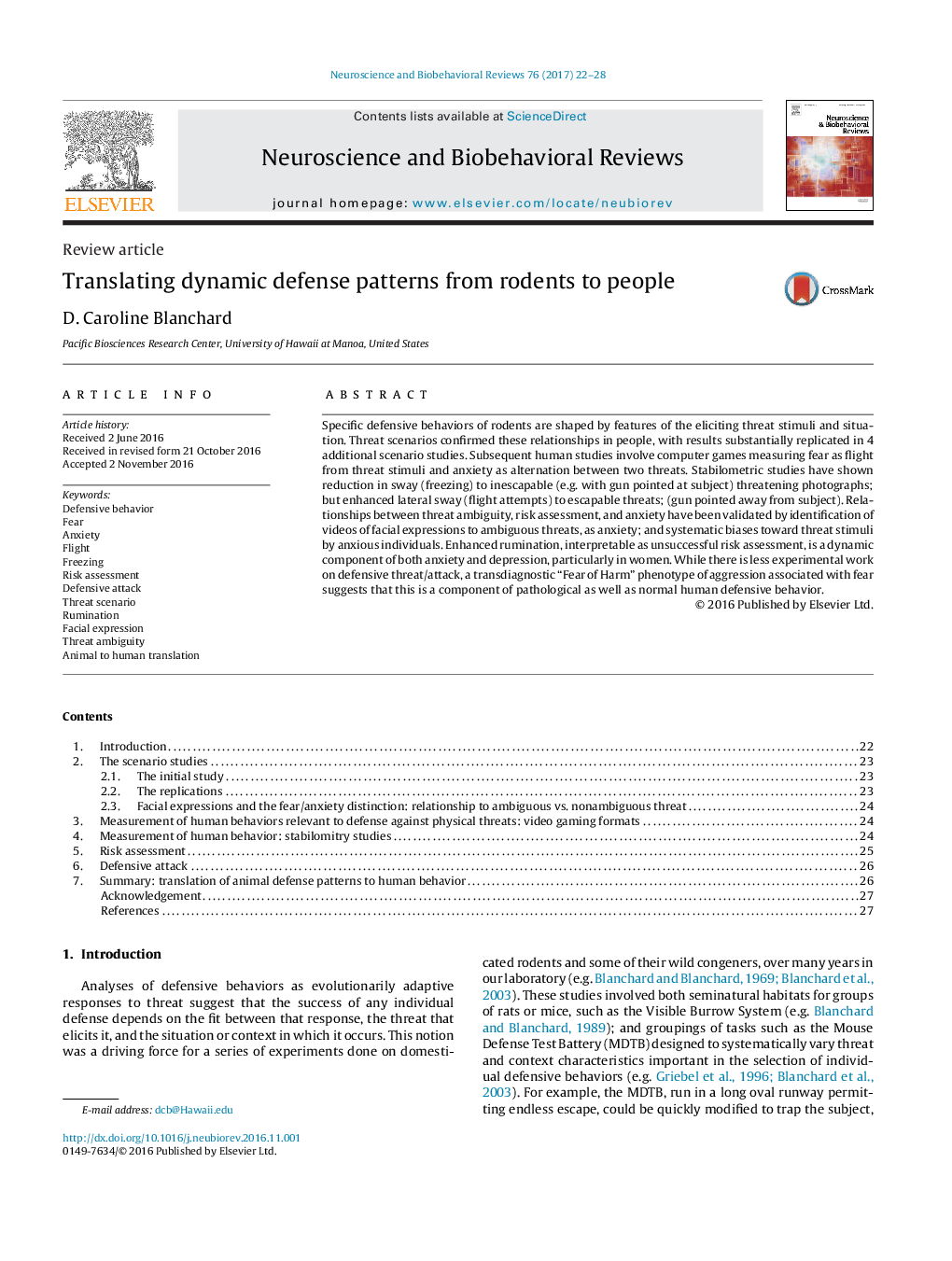| کد مقاله | کد نشریه | سال انتشار | مقاله انگلیسی | نسخه تمام متن |
|---|---|---|---|---|
| 5043664 | 1370589 | 2017 | 7 صفحه PDF | دانلود رایگان |
- Particular rodent defenses depend on characteristics of threat stimuli and situations.
- Responses to physical threat scenarios confirm these relationships in people.
- Innovative human defense measures: computer games, stabilimeters and eye gaze tracking.
- Provide evidence confirming basic patterns of flight, freezing and risk assessment.
- And their control by the same threat/situational stimuli as in rodents.
Specific defensive behaviors of rodents are shaped by features of the eliciting threat stimuli and situation. Threat scenarios confirmed these relationships in people, with results substantially replicated in 4 additional scenario studies. Subsequent human studies involve computer games measuring fear as flight from threat stimuli and anxiety as alternation between two threats. Stabilometric studies have shown reduction in sway (freezing) to inescapable (e.g. with gun pointed at subject) threatening photographs; but enhanced lateral sway (flight attempts) to escapable threats; (gun pointed away from subject). Relationships between threat ambiguity, risk assessment, and anxiety have been validated by identification of videos of facial expressions to ambiguous threats, as anxiety; and systematic biases toward threat stimuli by anxious individuals. Enhanced rumination, interpretable as unsuccessful risk assessment, is a dynamic component of both anxiety and depression, particularly in women. While there is less experimental work on defensive threat/attack, a transdiagnostic “Fear of Harm” phenotype of aggression associated with fear suggests that this is a component of pathological as well as normal human defensive behavior.
Journal: Neuroscience & Biobehavioral Reviews - Volume 76, Part A, May 2017, Pages 22-28
